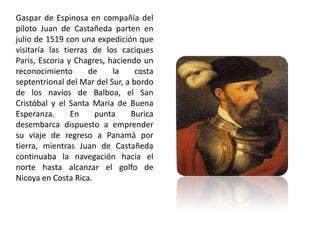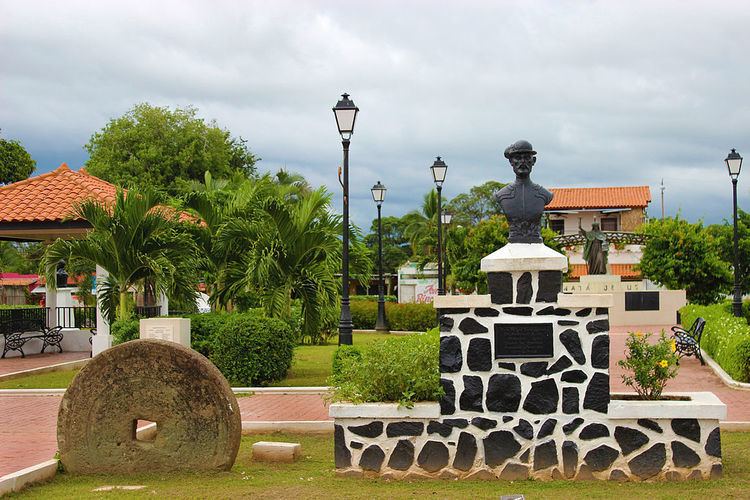Name Gaspar Espinosa | ||
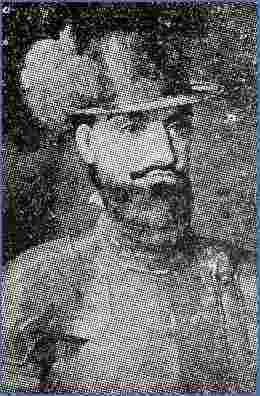 | ||
Acting Governor of Santo Domingo and oidor of the Real Audiencia of Santo Domingo In office (1524–1527) Monarch Charles I Preceded by Diego Colón Succeeded by Sebastián Ramírez de Fuenleal Lieutenant Governor General of Panamá In office (October 1533 – January 1534) Monarch Charles I Preceded by Diego Gutiérrez de los Ríos y Aguayo Succeeded by Pedro Ramírez de Quiñones Born c. 1484(age 53), Medina de Rioseco, Crown of Castile Died 14 February 1537(aged 53) Cusco, New Toledo Profession Oidor, explorer, conquistador, military, and governor Allegiance Spanish Empire Rank Lieutenant Similar Hernando de Luque, Rodrigo de Bastidas, Alonso de Ojeda | ||
Dc1475 vasco nunez de balboa vs gaspar de espinosa lrv20071015
Gaspar de Espinosa y Luna (Medina de Rio Seco, Spain, 1484 - Cuzco, Peru, 14 February 1537) was an explorer, conquistador and Spanish politician. He participated in the expedition of Pedrarias Davila to Darién and was appointed mayor of Nuestra Señora de la Antigua. He initiated proceedings against Vasco Núñez de Balboa and conquered part of current Costa Rica. After living some time in Spain, he returned to America to join Francisco Pizarro and Almagro in the conquest of the Inca Empire.
Contents
In the Indies
Already in middle age, he sailed for the Spanish and in 1513 was elected mayor of Castilla del Oro. A year later he formed part of the issuance of Pedrarias Dávila to Darién. Participated in the founding of the city of Panama (1519) and was appointed mayor of Santa Maria la Antigua. He led the expedition to the Pacific coast of Central America and was one of the architects of the discovery of the Gulf of Nicoya.
He led an expedition to Veragua with Hernando de Soto in 1520.
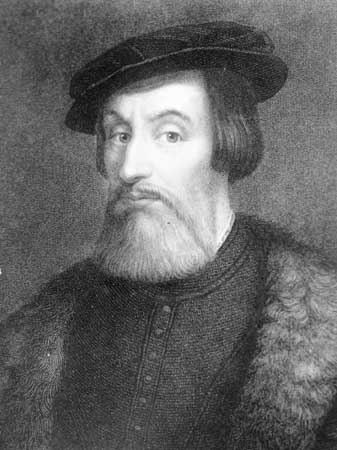
He returned to Spain, but soon became ruler of Santo Domingo and Panama, and returned to sail to America.
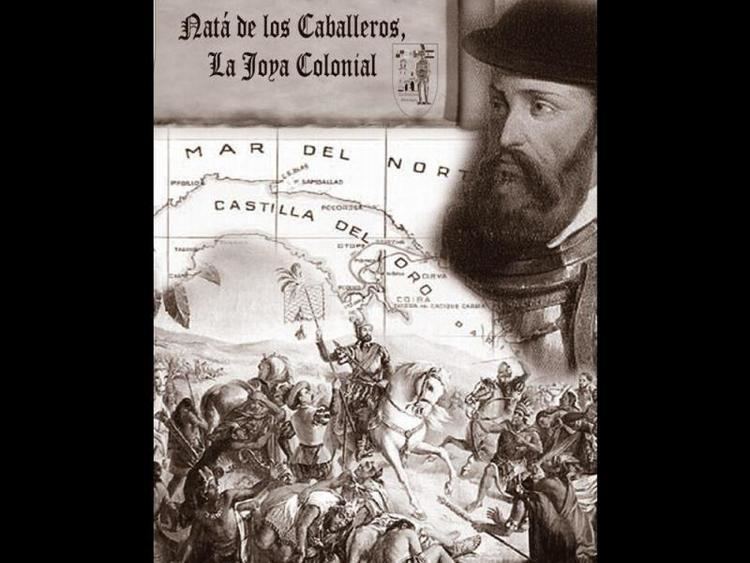
Finally, went to Peru where he financed with the help of his family, the expedition of Pizarro and Almagro, and tried, unsuccessfully, reconciliation between the two.
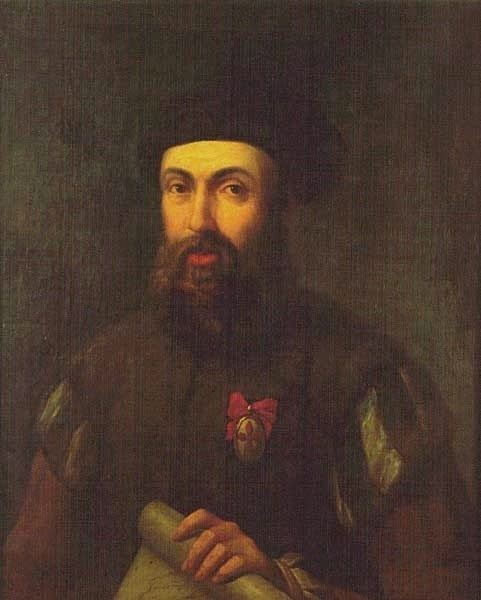
Espinosa's family had significant ties to the court in the first half of the sixteenth century. They played a crucial role in financing the expedition to the Moluccas in 1525, as well as previously contributing to the funding for the conquest of Peru.
